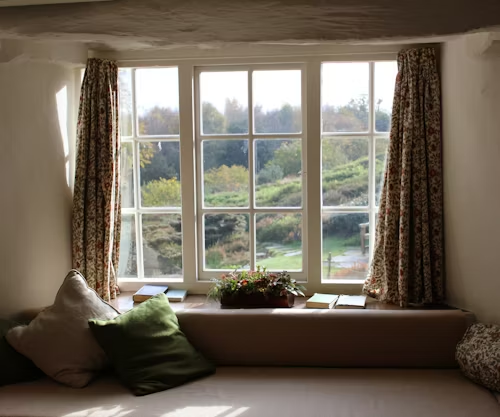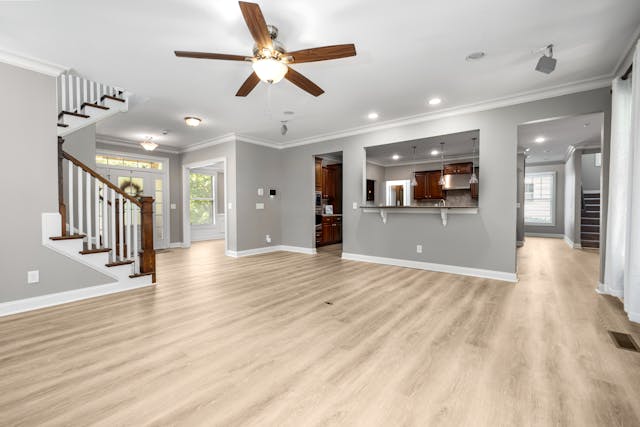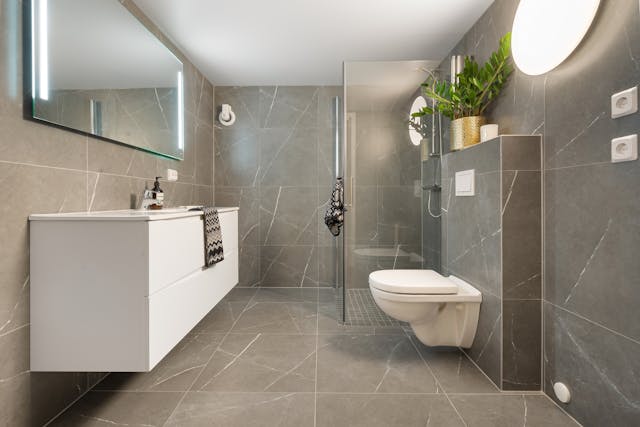
source
When it comes to enhancing the comfort and aesthetic appeal of your home, window upgrades are one of the most effective ways to achieve both goals. Windows play a crucial role in controlling the temperature of your home, improving energy efficiency, and adding to the overall design of your living space.
Whether you’re considering a modern look or simply aiming for a more energy-efficient home, upgrading your windows can make a substantial difference.
In this article, we’ll explore the key ways window upgrades can transform your home and why investing in this area can lead to long-term comfort and style.
Improving Aesthetic Appeal and Home Value
Beyond energy efficiency, window upgrades significantly impact the visual appeal of your home. The right windows can serve as both a functional and design statement, adding curb appeal and enhancing the interior aesthetics of your living space.
With countless styles, colors, and materials available, choosing the right windows can transform the look of your home and increase its overall value.
For homeowners who prefer a contemporary design, large floor-to-ceiling windows or expansive bay windows can introduce more natural light into the home, creating a bright and airy atmosphere. For those who appreciate traditional designs, double-hung or casement windows offer timeless elegance while still delivering energy efficiency.
The versatility of modern window designs allows you to complement your existing home architecture while boosting its market value.
Additionally, upgrading windows can improve the resale value of your home. Many potential buyers view energy-efficient windows as a desirable feature and a home with upgraded windows can command a higher price in the real estate market.
Partnering with a trusted window replacement company can help you choose the right window style and material that aligns with your design preferences and long-term investment goals.
Enhancing Energy Efficiency and Comfort
One of the main reasons homeowners opt for window upgrades is to improve energy efficiency. Older windows, especially those with single-pane glass, often allow significant heat loss in the winter and heat gain during the summer. This results in higher energy bills, as your HVAC system works overtime to maintain a comfortable indoor temperature.
Upgrading to modern, energy-efficient windows with double or triple glazing, as well as low-emissivity (Low-E) coatings, can drastically reduce the amount of energy required to heat and cool your home.
These advanced windows help maintain a consistent temperature by insulating against outdoor weather conditions. By minimizing heat transfer, you not only create a more comfortable living environment but also save money on energy bills in the long run.
For instance, Low-E windows are designed to reflect infrared light, helping retain heat indoors during winter and block it during summer. They also protect against harmful UV rays, which can cause furniture, carpets, and flooring to fade over time. In addition to the practical benefits, the comfort that comes with upgraded windows is instantly noticeable, creating a more stable indoor climate year-round.
Reducing Noise Pollution for a Quieter Home
Another often-overlooked benefit of upgrading your windows is noise reduction. Older windows, especially single-pane varieties, allow more external noise to enter your home. If you live in a busy urban area or near a high-traffic road, this can greatly affect your comfort and overall well-being.
Modern windows with multiple panes, along with special coatings and gas fills like argon or krypton, help to dampen external noise significantly. This added insulation creates a quieter, more peaceful indoor environment. Whether it’s the sound of passing cars, construction noise, or even neighbors, upgrading your windows can provide an oasis of calm inside your home.
This benefit is particularly valuable for bedrooms or spaces where you need a tranquil atmosphere, like home offices or reading nooks. The reduction in noise pollution contributes to a more restful environment, improving your quality of life.
Increasing Natural Light for a Healthier Living Space
Natural light is not only an essential element for creating a welcoming and open environment in your home, but it also plays a key role in your overall well-being. Exposure to natural light has been shown to improve mood, increase productivity, and even help regulate sleep patterns. By upgrading your windows, you can optimize the amount of daylight entering your home, making it a healthier and more pleasant place to live.
Large, strategically placed windows can bring in more sunlight and make your living space feel more spacious. They can also reduce your reliance on artificial lighting during the day, which in turn can lower your energy consumption. In rooms like the kitchen, living room, or even bathrooms, where natural light is desired, upgrading your windows to allow more light can make a dramatic difference in the ambiance of the space.
Moreover, windows that are designed to enhance natural light can also improve indoor air quality. By allowing more sunlight and fresh air into your home, these upgrades promote a healthier environment, reducing the risk of mold and mildew build-up in dark, poorly ventilated areas.
Boosting Security and Durability
Modern window upgrades also enhance the security of your home. Older windows with outdated locking mechanisms can be an easy target for intruders. Newer windows, however, are designed with stronger, more advanced locking systems, adding an extra layer of protection to your property.
Many of today’s window models are built with reinforced frames and shatter-resistant glass, making them more durable and resilient against both break-ins and extreme weather conditions. This added durability ensures that your investment in window upgrades is a long-term solution that contributes to the safety of your home. In areas prone to storms or high winds, choosing impact-resistant windows can also protect against potential damage from flying debris.
These security features provide peace of mind for homeowners, especially when combined with other home security measures. Whether you’re home or away, modern windows can offer better protection for your property.
All in all, upgrading your windows is one of the most effective ways to maximize both the comfort and aesthetic appeal of your home. From improving energy efficiency to enhancing natural light and security, modern window upgrades offer a range of benefits that go beyond just appearance. Partnering with a reliable window replacement company can help you make the best choices for your home’s specific needs, whether you’re focused on energy savings, reducing noise, or boosting your home’s curb appeal.
Incorporating the right window styles and technologies into your home will not only improve your quality of life but also increase the value of your property. Investing in high-quality, energy-efficient windows is a decision that pays off in terms of comfort, savings, and long-term durability, making it an excellent choice for any homeowner looking to enhance their living space.







